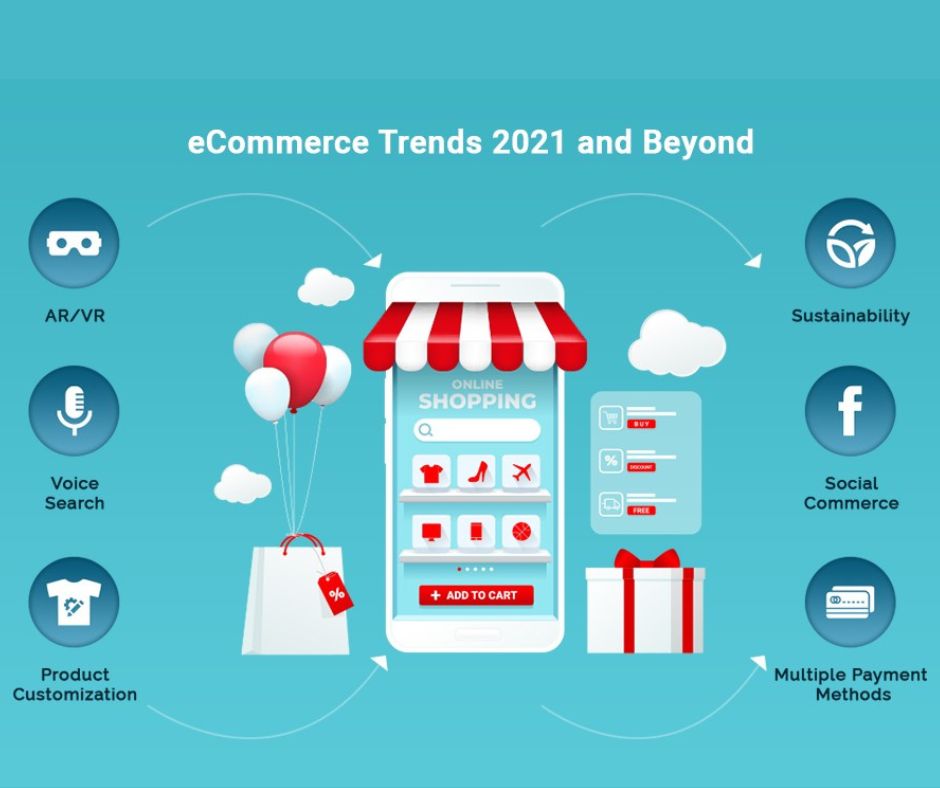
The world of e-commerce and online shopping has been rapidly evolving in recent years, driven by changing consumer behaviors, technological advancements, and the global shift towards digitalization. To stay competitive in this dynamic landscape, businesses must keep a close eye on emerging trends and adapt to meet the evolving demands of online shoppers. In this blog post, we will explore the latest trends in e-commerce and online shopping that are reshaping the industry.
With the widespread use of smartphones, mobile commerce has become a dominant force in e-commerce. Shoppers now expect seamless and user-friendly mobile experiences. This trend is prompting businesses to optimize their websites for mobile devices, develop mobile apps, and implement mobile payment options. Progressive web apps (PWAs) are gaining popularity as they combine the best of both worlds, offering app-like experiences through web browsers.
Artificial intelligence (AI) and machine learning are revolutionizing online shopping. These technologies enable businesses to provide personalized product recommendations, chatbots for customer service, and predictive analytics to forecast trends and inventory needs. AI-driven chatbots offer 24/7 assistance to customers, enhancing user experiences and improving customer satisfaction.
Voice assistants like Amazon's Alexa and Google Assistant have made voice commerce a growing trend. Shoppers can now make purchases by simply using their voice commands. As voice recognition technology improves, this trend is likely to gain more traction, especially for routine and low-value transactions.
AR and VR technologies are transforming the way customers shop online. Retailers are using AR to enable customers to visualize products in their real-world environment before making a purchase decision. For instance, furniture companies allow customers to place furniture in their homes to see how it fits. VR, on the other hand, is being used to create immersive shopping experiences, such as virtual storefronts or fashion showrooms.
Consumers are increasingly concerned about the environmental and ethical impact of their purchases. Many e-commerce businesses are responding by offering eco-friendly and ethically sourced products. Transparency in the supply chain is crucial, and companies that can demonstrate their commitment to sustainability are gaining a competitive edge.
Subscription-based e-commerce models are on the rise. Customers can subscribe to receive products regularly, from beauty products to meal kits and streaming services. These models provide businesses with predictable revenue streams and foster customer loyalty.
Social media platforms are becoming more integrated with e-commerce. Instagram Shopping, Facebook Marketplace, and Pinterest Shopping are just a few examples of how consumers can discover and purchase products directly from their favorite social media apps. Influencer marketing also plays a significant role in driving sales through social commerce.
Fast and convenient shipping options are now the norm. E-commerce giants like Amazon have set high standards for speedy delivery, pushing other retailers to offer same-day or next-day delivery options. Some businesses are even experimenting with drone and autonomous vehicle deliveries.
The COVID-19 pandemic accelerated the adoption of contactless payments. Shoppers prefer to make payments using digital wallets like Apple Pay, Google Pay, and contactless credit cards. This trend is likely to continue as it offers a more hygienic and convenient payment method.
As e-commerce continues to grow, so do concerns about data privacy and security. Customers are increasingly cautious about sharing their personal information online. Businesses that prioritize data protection and transparency in data handling will earn the trust of their customers.
The world of e-commerce and online shopping is in a constant state of flux, driven by technological innovations and shifting consumer preferences. Staying ahead in this competitive landscape requires businesses to not only adapt to these trends but also anticipate future developments. Whether it's through mobile commerce, AI-driven experiences, sustainable practices, or new payment methods, the key to success in e-commerce lies in understanding and embracing the latest trends to meet the ever-evolving demands of online shoppers. By doing so, businesses can position themselves for growth and continued relevance in the digital age of commerce.
